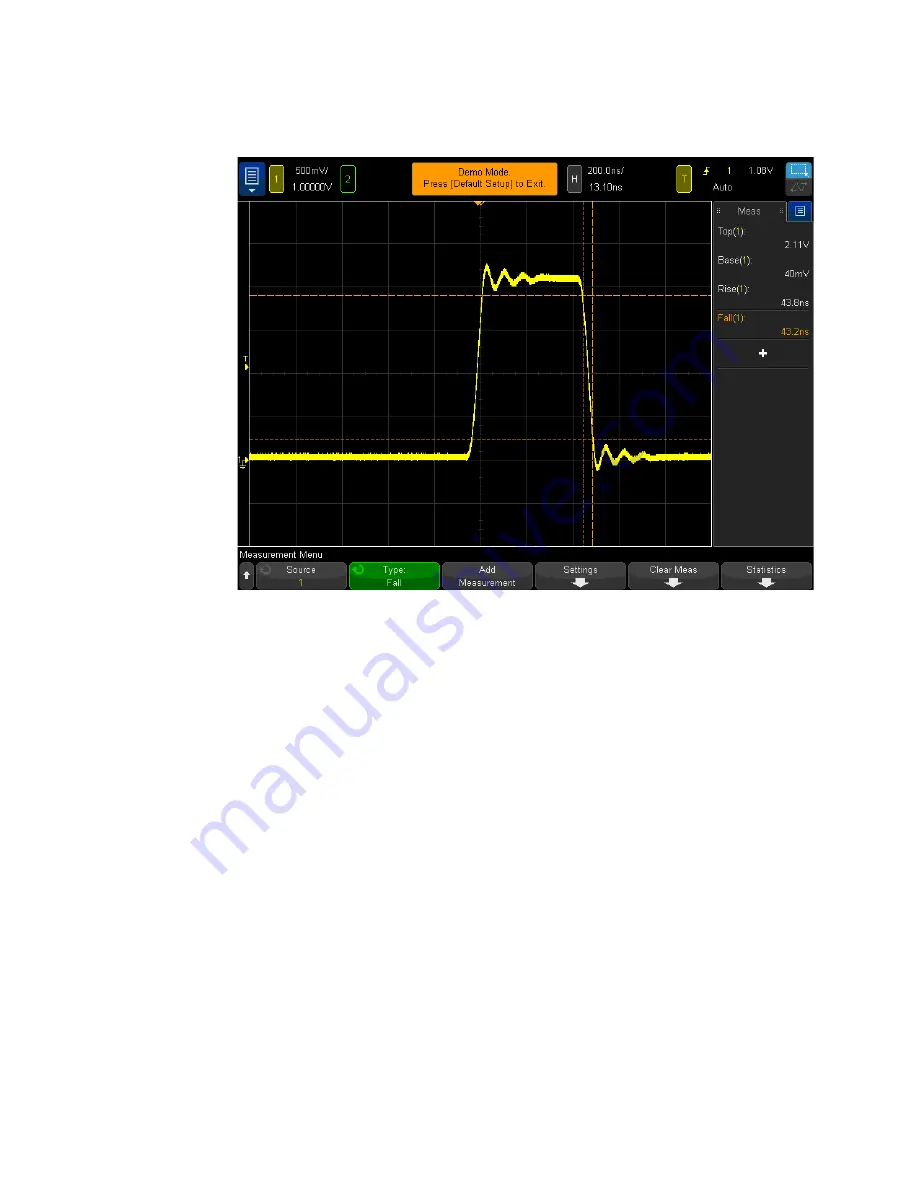
18
4000 X-Series Oscilloscopes Advanced Training Guide
2
Oscilloscope Familiarization Labs
Your scope’s display should now look similar to
. If Fall Time was the last
measurement that you selected, then the cursors will show where this
measurement is being performed.
At this point, you may be wondering what the difference is between the “top” of a
waveform (Vtop) versus the “maximum” of a waveform (Vmax), as well as the
difference between the “base” of a waveform (Vbase) versus the “minimum” of a
waveform (Vmin).
Vtop is the steady-state high level of the waveform. This is the voltage level of the
waveform after the overshoot and ringing have settled. Likewise, Vbase is the
steady-state low level of the waveform. For digital pulse parameter
measurements, Vtop and Vbase are often more important parameters to measure
than the absolute maximum and minimum voltages of the waveform (Vmax and
Vmin), which are the peak values of the overshoot.
The Rise Time and Fall Time measurements that we performed are relative
transition times. This means that they have been performed relative to specific
voltage threshold levels. The scope’s default threshold levels for these
measurements are the 10% and 90% levels relative to Vbase and Vtop. But many
of today’s higher speed devices have specified rise and fall times relative to 20%
Figure 5
Performing additional pulse parameter measurements on a digital pulse.
















































